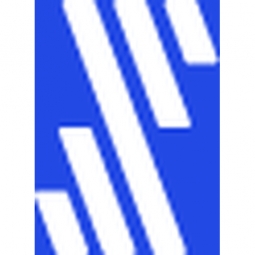技术
- 分析与建模 - 预测分析
- 基础设施即服务 (IaaS) - 云数据库
适用行业
- 水泥
- 金融与保险
适用功能
- 销售与市场营销
用例
- 行为与情绪追踪
- 泄漏与洪水监测
关于客户
Kuda 是一家数字银行,于 2019 年在尼日利亚推出。它通过一款包含跟踪支出和资金管理工具的应用程序,为该国居民提供更简单的个人财务管理方式。该银行一直处于惊人的增长轨道,客户数量在短短六个月内增加了四倍。作为一家敏捷、移动优先的数字公司,Kuda 认识到数据驱动的必要性,并认为现代数据堆栈对于实现其目标至关重要。
挑战
Kuda 是一家于 2019 年在尼日利亚推出的数字银行,六个月内客户数量增加了四倍。作为一家移动优先的数字公司,Kuda 认识到数据驱动的必要性,并认为现代数据堆栈对于实现其目标至关重要。最初,一个五人数据团队手动构建数据管道,并依靠 SQL Server Reporting Services (SSRS) 从事务数据库中提取见解。他们的数据被分成 12 个不同的 Azure SQL 数据库,无法成功连接内部源中的数据。该团队希望不再在 OLTP 数据库上运行 OLAP 查询,事实证明这是一项具有挑战性的任务。他们需要一个更具可扩展性的解决方案,使他们不必构建和管理数据管道。
解决方案
Kuda 决定使用 Fivetran 进行 ELT,并使用 dbt 在 BigQuery 中执行数据转换。选择 Fivetran 作为数据管道,Google BigQuery 作为数据仓库,dbt 用于数据转换,Looker 作为 BI 工具。最有价值的数据来自 Kuda 面向客户的核心银行交易系统,其中包括有关客户获取、产品和服务监控的指标。 Kuda 还使用先进的信用评分分析技术,根据数据向客户提供更明智的透支服务,从而降低风险。对来自客户对话平台 Intercom 的数据进行分析,以帮助支持团队分配资源并针对他们最有可能被问到的问题类型进行规划。目标是改善客户体验并利用洞察力创建更好的客户参与模型。
运营影响
数量效益

Case Study missing?
Start adding your own!
Register with your work email and create a new case study profile for your business.
相关案例.

Case Study
System 800xA at Indian Cement Plants
Chettinad Cement recognized that further efficiencies could be achieved in its cement manufacturing process. It looked to investing in comprehensive operational and control technologies to manage and derive productivity and energy efficiency gains from the assets on Line 2, their second plant in India.

Case Study
Real-time In-vehicle Monitoring
The telematic solution provides this vital premium-adjusting information. The solution also helps detect and deter vehicle or trailer theft – as soon as a theft occurs, monitoring personnel can alert the appropriate authorities, providing an exact location.“With more and more insurance companies and major fleet operators interested in monitoring driver behaviour on the grounds of road safety, efficient logistics and costs, the market for this type of device and associated e-business services is growing rapidly within Italy and the rest of Europe,” says Franco.“The insurance companies are especially interested in the pay-per-use and pay-as-you-drive applications while other organisations employ the technology for road user charging.”“One million vehicles in Italy currently carry such devices and forecasts indicate that the European market will increase tenfold by 2014.However, for our technology to work effectively, we needed a highly reliable wireless data network to carry the information between the vehicles and monitoring stations.”

Case Study
Safety First with Folksam
The competitiveness of the car insurance market is driving UBI growth as a means for insurance companies to differentiate their customer propositions as well as improving operational efficiency. An insurance model - usage-based insurance ("UBI") - offers possibilities for insurers to do more efficient market segmentation and accurate risk assessment and pricing. Insurers require an IoT solution for the purpose of data collection and performance analysis

Case Study
Smooth Transition to Energy Savings
The building was equipped with four end-of-life Trane water cooled chillers, located in the basement. Johnson Controls installed four York water cooled centrifugal chillers with unit mounted variable speed drives and a total installed cooling capacity of 6,8 MW. Each chiller has a capacity of 1,6 MW (variable to 1.9MW depending upon condenser water temperatures). Johnson Controls needed to design the equipment in such way that it would fit the dimensional constraints of the existing plant area and plant access route but also the specific performance requirements of the client. Morgan Stanley required the chiller plant to match the building load profile, turn down to match the low load requirement when needed and provide an improvement in the Energy Efficiency Ratio across the entire operating range. Other requirements were a reduction in the chiller noise level to improve the working environment in the plant room and a wide operating envelope coupled with intelligent controls to allow possible variation in both flow rate and temperature. The latter was needed to leverage increased capacity from a reduced number of machines during the different installation phases and allow future enhancement to a variable primary flow system.

Case Study
Automated Pallet Labeling Solution for SPR Packaging
SPR Packaging, an American supplier of packaging solutions, was in search of an automated pallet labeling solution that could meet their immediate and future needs. They aimed to equip their lines with automatic printer applicators, but also required a solution that could interface with their accounting software. The challenge was to find a system that could read a 2D code on pallets at the stretch wrapper, track the pallet, and flag any pallets with unread barcodes for inspection. The pallets could be single or double stacked, and the system needed to be able to differentiate between the two. SPR Packaging sought a system integrator with extensive experience in advanced printing and tracking solutions to provide a complete traceability system.




